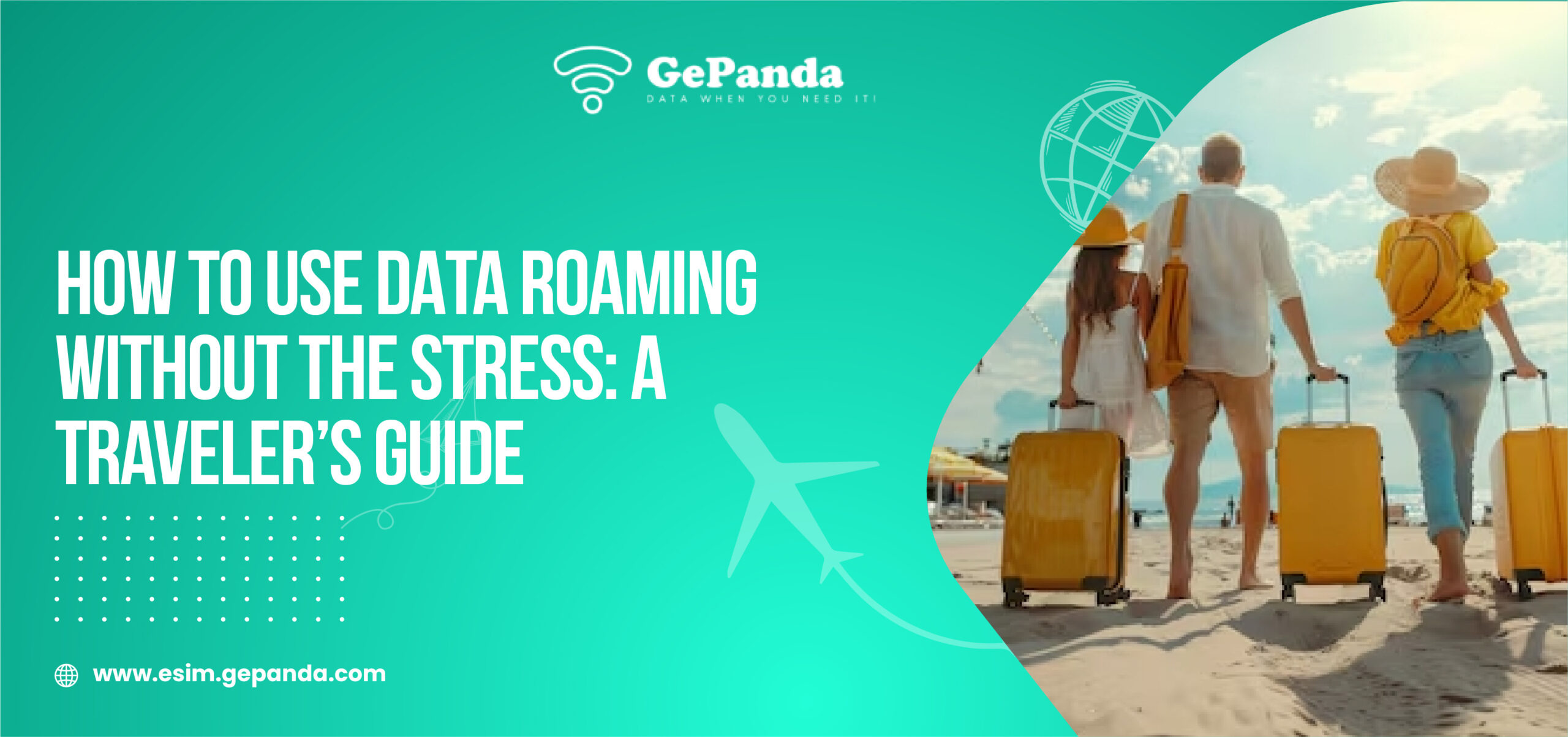International travel is very exciting, and among the greatest anxieties of contemporary travelers is the ability to stay in touch without incurring sky-high phone charges. We use mobile data for everything, from navigation and ride-hailing to booking hotels, translating, and staying in touch with loved ones. However, a large number of individuals are hesitant to switch on data roaming due to reports of outrageous bills. The good news? The roaming of data does not have to be tense.
You can always have confidence in using your phone, wherever you are in the world, to maintain contact and manage your expenses with the right knowledge and tools. This guide will describe what roaming is, why it can be so costly, and how you can utilize data roaming to be smart and avoid overcharging your phone bill, allowing you to concentrate on your trip instead.
Understanding Data Roaming
When you move out of your country of origin, your mobile company does not have its network in a foreign country. Rather, you have your phone attached to a domestic network in the country that you are in, and your carrier takes the network on loan. This setup is termed data roaming.
This makes the traveling hassle-free; you do not have to change your SIM cards or go through any elaborate process that may require complex settings, but there is a price attached to it: your provider is billed for this service, and charges are imposed on you. That is why data roaming has a bad reputation for being costly when not on a plan or when using an alternative solution.
Why Roaming Charges Can Be High
There are generally high roaming charges due to international deals between operators. Your provider basically pays a wholesale charge to the foreign network to use it. When you are streaming videos, sharing photos, or just using the navigation, the charges can quickly accumulate.
The positive news is that in recent years, carriers have improved. Most of them have either daily roaming, international, or regional options or add-ons that will reduce the price. With new technologies such as eSIMs, travelers are no longer required to pay these high charges, as they can purchase affordable domestic or international data packages.
Tips to Use Data Roaming Smartly
You don’t have to avoid roaming altogether—just use it wisely. Here’s how:
1. Check Your Carrier’s International Plan
Before your trip, log into your provider’s app or website and explore international plans. Many carriers now offer daily passes where you pay a flat fee per day (e.g., $10) to use your plan abroad. This is perfect for short trips where convenience matters more than finding local solutions.
2. Turn Off Background Data
The apps usually operate at the background operating on data to update, track location, and synchronize. Turn off background data, or place your phone in low data mode to make sure you are only consuming data on necessities. This simple step prevents unnecessary charges.
3. Download Maps and Content Ahead of Time
Before leaving home, download offline maps, music, books, or other content. Google Maps, for example, allows you to save areas for offline navigation. That way, you only use roaming for what’s truly needed, like messaging or ride-hailing.
4. Use Wi-Fi Whenever Possible
Wi-Fi is your best friend when traveling. Hotels, airports, cafes, and coworking spaces often have free or low-cost Wi-Fi. Just be mindful of security—avoid entering sensitive information on public networks unless you use a VPN.
5. Consider an eSIM for Travel
ESIM technology is one of the most clever methods of not wandering around with stress in 2025. Using an eSIM, you can buy a local or regional data plan in advance before travelling, install it in seconds through a QR-code, and use it on a local carrier at reasonable rates. This is simple on such websites as GePanda, and even country-specific or multi-country-specific plans are available.
6. Track Your Usage in Real-Time
Most smartphones have built-in tools to track mobile data usage. Reset your data counter before your trip so you can see exactly how much you’re using and avoid surprises. Many carriers also provide alerts when you hit usage thresholds.
Why eSIMs Are Changing the Game
The ease with the traditional roaming plans comes with the cost of being very costly; eSIMs solve this by allowing you to purchase some prepaid data plan that is operable in the country that you are visiting, and you can do it without changing your SIM cards. Such a solution is ideal when the traveler is on the road frequently, working remotely, or simply wishes to have complete control of expenses.
With GePanda, for example, you can:
- Reserve and buy international data plans in advance.
- Your eSIM can be activated in minutes with a QR code.
- Don’t worry about locating a SIM card in the airport.
- Enjoy affordable rates with no surprise fees.
There will be no more concerns about roaming charges since you will have a peace of mind and a good connection as soon as you arrive.
Final Thoughts
Roaming no longer needs to be associated with random bills and a lack of connectivity. You can drive or fly anywhere in the world and remain online either by using it to navigate or communicate with each other or share memories.
The trick is to be aware of your choices: examine plans of your carrier abroad, reduce unneeded data, and use eSIMs of cheap and convenient service. GePanda global eSIM solutions make roaming hassle free, leaving your focus on the adventure, not on your phone bill.
Travel smarter in 2025. Remain in touch without failure.




